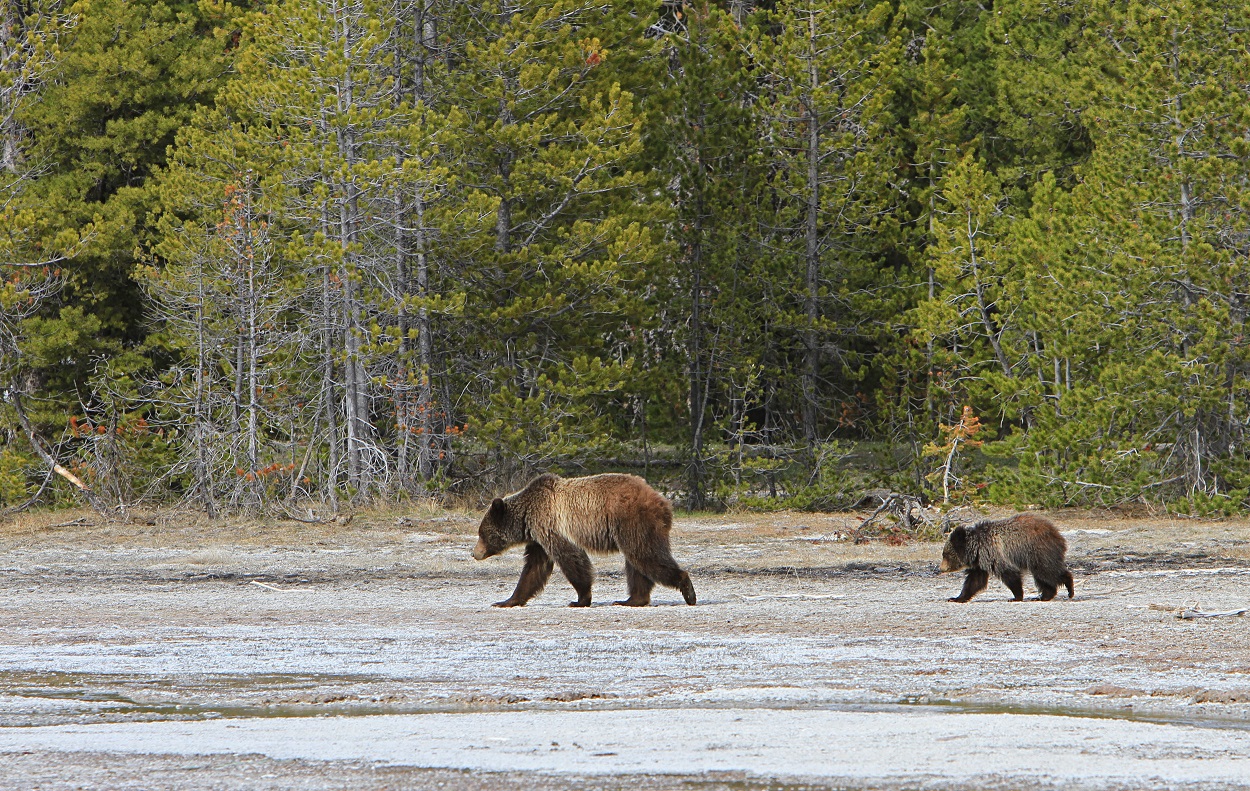A couple of years ago while backpacking in the Northern Rockies, a friend and I were coming back to our campsite toward the end of the day when we saw a large shape moving in the willows near a creek. Slowing our pace and making sure our bear spray was at the ready, we waited to see what nature would reveal to us: a grizzly bear, slowly working her way up the riparian corridor, searching – as nearly always – for food.
We watched for several minutes, then made our way to our campsite and made a small fire, with our senses heightened in the way that they only can be when you know you’re not at the top of the food chain miles into the wilderness. It’s an honor, a privilege, and a responsibility to live in an ecosystem wild enough to be home to the great bear.
I was fortunate enough to see that grizzly in the wild because of the Endangered Species Act. Passed in 1973, this Act is responsible for helping to bring grizzly bears, southern sea otters, black footed ferrets and gray wolves back from the brink of extinction and putting them on the road to recovery. Today, on Endangered Species Day, we celebrate these conservation efforts to protect threatened and endangered species.
And yet, despite this progress for many species toward recovery, there is tremendous work to be done. Right now, scientists estimate that over one million species are on the brink of extinction. Animals, plants, and insects are going extinct at 1,000 times the natural rate. This past year alone, we lost 23 plants and animals that we will never be able to recover.
Though Earth has gone through five mass extinctions before, the difference now is that humans are the cause of the current – sixth – mass extinction. The greatest tragedy is that a majority of extinctions are entirely preventable, so to lose a species to extinction represents a huge moral and ecological failure. There is a profound emotional component as well to loss of biodiversity and our current state of isolation and disconnection: “species loneliness”, which author Robin Wall Kimmerer describes as “a deep, unnamed sadness stemming from estrangement from the rest of Creation, from the loss of relationship.” Tragedies such as the loss of the ivory-billed woodpecker, splendid poison frog, and the little Mariana fruit bat, all of which went extinct this past year, will continue if we do not take action immediately. Currently, there are more than 1,600 species on the Endangered Species list in the US, with dozens more proposed for listing.
Far too many of the plants and animals we share the planet with are on the edge of extinction – a risk not only to themselves, but to us. Biodiversity is the interconnected web of species that balances and supports life. The planet functions as one large ecosystem, so when one species is removed – or in this case potentially one million – there are ripple effects throughout the food chain, all the way up to and including humans.
Reducing biodiversity means that millions of people will face a future with dwindling resources and food supply, increased vulnerability to disease, and less access to fresh water. It is in our best interest, not only from a moral standpoint, but from a survival one, to conserve and protect our fellow inhabitants of planet Earth.
Fortunately, there is a path forward, and extinction is not inevitable. The Endangered Species Act has an incredible track record and has prevented the extinction of 99 percent of the plants and animals under its protection. And yet, decades of underfunding has kept this Act from realizing its fullest potential. Without adequate funding, the U.S. Fish and Wildlife Service cannot take action to protect imperiled species and their habitat.
To meet the current needs of our most at-risk species, the U.S. Fish and Wildlife Service requires a budget of $704.05 million, starting in FY 2023. Fully funding and implementing the provisions of the Endangered Species Act is our best chance at protecting the millions of species facing habitat loss, climate change, pollution, and other human activities threatening their survival.
All life on earth is interconnected and protecting biodiversity protects humanity. This Endangered Species Day, and every day, we must fight to protect our fellow species on this beautiful and fragile planet.
